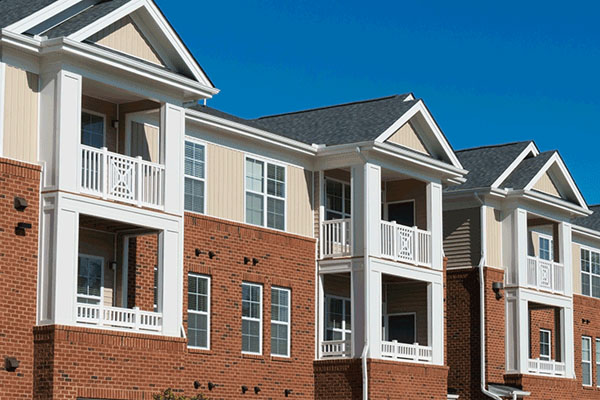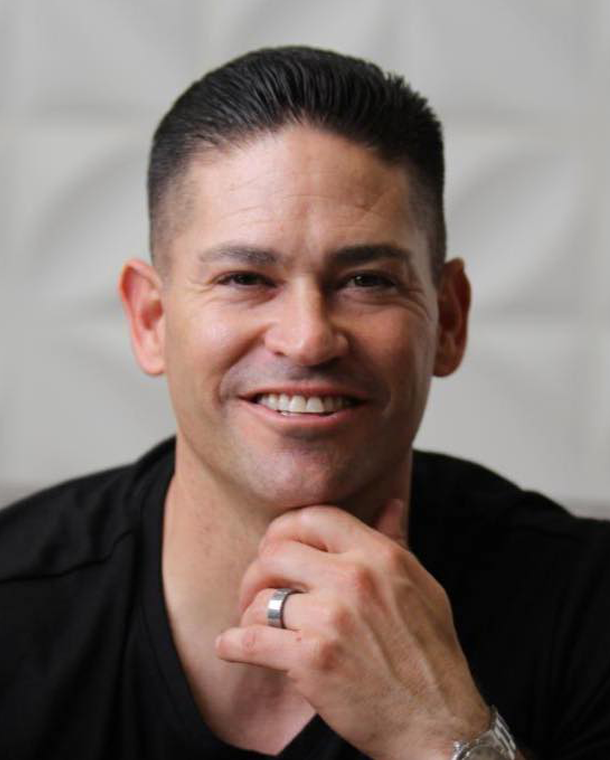It’s not just the big numbers that define success in real estate development. It’s also about building partnerships and serving others in your own way. In this episode, Sam Wilson discusses how to build success in the real estate development space with highly successful real estate investor, business owner, coach, and speaker Jerome Maldonado. Jerome talks about getting his start in sales and real estate, surviving the market correction of 2008, and why relationships are important in scaling your business. Want to learn more? Then tune in and be inspired by Jerome’s story.
—
Watch the episode here:
Listen to the podcast here:
Real Estate Development: Slow And Steady Wins The Race With Jerome Maldonado
Jerome Maldonado is a highly successful real estate investor, business owner, coach and speaker. Over the span of his career, he’s done over $200 million in in-house transactions, with another $52 million in 2021 alone. You guys are rocking and rolling. I’m looking forward to jumping in. Jerome, welcome to the show.
Thank you so much for having me, Sam. I appreciate you having me here.
The pleasure’s mine. There are three questions I ask every guest who comes on the show. Can you very quickly tell us, where did you start, where are you now and how did you get there?
I started in direct sales and network marketing in the early ’90s, 1993. That’s probably the pinnacle of my success. It’s learning sales, communication, business and relationships. The company was put out of business in 1997 by the FTC. In a nutshell, we were left struggling to try to figure things out. I ended up at construction on accident. I went back to finish up my college degree at a time when I felt like I had failed and spent about a year in college.
At that time, I helped my brother-in-law get his contractor’s license. I got my own at the same time. We ended up pouring concrete and we still own that company. A year later, I realized that there was a lot of money in building houses and I bought a piece of land. I built a house in 1999. That’s turned into subdivisions that we develop now and a lot of retail that we did in pre-recession, office and warehouse development. Now, we’re doing a lot of multifamily development. We finished off the year with a little over $70 million on our books for 2021. We’re proud of 2021. That’s the biggest deal we’ve ever had with projects on our books since we’ve started.
I heard that 2022 is looking like you’re going to crest the $100 million number as well.
Yeah, it does. We got one project alone that’s shy of $60 million that we’re doing up in Port Orchard, Washington. We’re working on entitlements on that. We’re excited for 2022.
We’ve been able to scale to this level because of the relationships and the great partnerships that we were able to put together with quality people.
There’s so much here that we could unpack. I don’t even necessarily know where I want to take this. You guys are in multifamily and affordable housing, but you’re doing this all for yourself. You’re not building it for other people. You’re building it for your own company.
We’re doing a lot of this stuff in-house. We’re subbing out to a lot of contractors that we’re doing a cost-plus model within other states. There are partnerships involved in this. When I say I’m doing it all for ourselves in-house and company, it is all in-house for our company. You can’t scale without good people. One of the big things that I started in 2016 that didn’t parlay until 2018 was good partnerships. Everything that we did up to 2018, we did 100% independently utilizing institutional money. Since 2018, we’ve been leveraging relationships. We’ve been able to scale to this because of the relationships and great partnerships that we’ve been able to put together with quality people.
What were some of the things that those relationships brought to the table that maybe were key ingredients for you?
There are certain things that you’re good at, Sam, and I’m good at. There are certain things that I dislike. They’re not my desirable areas to focus on. When people realize that there are people who do things better than themselves and leverage those assets of other people, it helps to scale a good business. The asset management part of the business was never something that I had specialized in. We had managed our own properties, but it wasn’t something that we cared for or liken to the magnitude of asset management on a large apartment scale. We had never done it before 2016.
My first takedown was in 2017 and I realized that it wasn’t a side of the business that I enjoyed as much. I was good at the development, construction, value-add and project management side. Leveraging people that were good at the asset management side was one key component. The development was getting so big, even finding people who helped in the entitlement process and partners who helped parlay us through big projects. The entitlement process made a big difference in pushing projects through quicker, more efficiently and allowing us to scale a lot quicker. Those are some key components.
The entitlement process is almost a business in itself. It can be overwhelming if you don’t know the levers to pull, city council meetings to go to and the right. You’re out there trying to build something. When you guys are doing these development projects, what’s your end goal with them? Are you guys holding them long-term? Are you leasing them up and then selling them off? What’s that look like?

No, we’re stabilizing and keeping them. We do a cash-out refi and pull out some equity. It’s this stage in the game, Sam, as I push closer to my 50s, it’s now important for me and more for asset holdings. We buy the land, develop, build, stabilize, keep them and then we’ll do a cash-out refi on a lot of them. We take out that capital and deploy it. We’ve got some little tricks that we do with that capital that make what we do financially viable, tax-wise, cash-wise, liquidity-wise and all of the above.
I’m assuming you raise capital for these opportunities. Do you keep those investors in? Is it one of those things where you cash investors out and then they move on to the next project? How does that work for you?
For some of them, we do raise capital. Some of them, we don’t. I have a project here locally that I’ve owned the land since 2006. We have no investors in it. We will have some institutional money there, but it’ll be a $28 million project this 2022. We’ve owned the land for a long time. Our larger stuff, like the stuff we’re doing in Washington State, Phoenix and down in Palm Springs, California, all have investors. We do minimize the capital raised on our stuff. We’ll raise a couple of million dollars here and there.
In Port Orchard, we’ll end up raising probably about $6 million, give or take. It’s a bigger project, though. When we do so, we do raise capital to leverage the investors out. Once we have stabilized the property, we go in and do a cash-out refi, take current market value for it, do an appraisal and then cash them out. They’ll usually be two of us that’ll stay in there, the main partners. The rest of everybody else will move on to another project.
I find this intriguing. You said you minimize your capital raise doing these large projects. How do you minimize the capital you raise on such big projects?
There are a couple of things. One, we’ve been in the game for a long time, so we do have some cash in the pocket ourselves. We do bring cash to the table. We refinance our cash out at the end of the project like everybody else. Our skin is in the game like everybody else. That’s one way. The second way is we never buy the land upfront. I control the land. We go in and I put an offer on the land. We put in deposit money. We control the land, but we don’t buy the land.
If we can’t control the land without purchasing it for a good duration of time like if we are required to buy land, we require the sellers to do either an owner finance deal with a 2, 3-year call. Either 0% interest or very low-interest rates so that we don’t have as much liability as we’re going through the entitlement process. For those of you guys who don’t know, the entitlement process is all the engineering, zone changing and subdividing, if there’s any.
Good partnerships and good relationships are key in scaling.
It’s all dealing with flood control, arborists and all of the pre-construction before you come out of the ground logistics to get that project viable, where they say, “Here are your permits. You can go.” That’s the entitlement process. It’s a time killer for a lot of deals. It takes 1 to 2 years to get a project out of the dirt. When we’re doing it, having that liability of a $1 million piece of land or multi-million-dollar piece of land tied up with cash out on it is always a liability.
When we went through the 2008 recession, we used to do that. We buy the land first. That’s why I got stuck with land that I’m developing now. It’s because we owned it. We stopped buying land in 2009. We controlled the interest in the land and worked through an entitlement process. When we’re done with entitlement, the land is worth more. We’re able to do a larger valuation on the property and on the land, being that we have a viable project. It decreases our capital raise because now the land is more financially viable. In that regard, we’re able to go to the bank, leverage a little bit more institutional money and a little less capital from investors. Those little tricks are how we minimize our capital raise.
Let’s go back to 2008 because that was going to be one of my questions was, if you’ve been in this since 1999, you’ve seen a couple of hard times, the dot-com bust and the 2008 crisis. How did you weather 2008? What are you predicting moving forward? How are you guys protecting yourself on the downside risk?
We’ve lived through a lot of ups and downs. 2008 was a very interesting time. We had an office and retail under development and we also had subdivisions. Our subdivisions saved our lives. We sat on them for a little bit, but we were in an asset class over the median. I always tell people, “Don’t invest in the median.” Median homes are $350,000. The first people who go into bankruptcy are those who are purchasing homes with DNC credit. They’re the ones at $200, $500 a month variables. That affects their life. Those are the people who are going into foreclosure first. We don’t focus on that sector.
The sector that’s over $1 million in most markets, those are people that should probably be in $700,000 or $650,000 homes. They’re the people competing with the Joneses. Those are the other people that are over-leveraged. Those homes are over $1 million, not the ultra-wealthy. We’re not talking about people in the $4 million, $8 million, $10 million homes. Just pushing over that $1 million range. That market gets hit second.
Our homes have always been over the median. The people like our parents, grandparents, who have worked, retired, more stable incomes, the doctors, the professionals, the people that are stable and haven’t over-leveraged themselves. Those are the people that hold a little bit stronger. What I found out in the 2008 recession was that my homes were selling. They were just selling slow. Even in the worst time in the world, when I was originally making a little over $100,000 per build, I was still making over $50,000 per build.
We restructured our business model and cleaned some stuff up. We got our builds up to about $80,000 in profitability. We shaved off some of the excess expenses on our builds and cleaned up our business model. We cut our costs with our subcontractors. They agreed to it. We were able to continue buying land and building houses. It saved us through the recession. I started buying more real estate. The debt that I was servicing on bad real estate, retail and office, almost took us under.

I’m not going to sit and pound my chest that I got through this like a breeze because it took every bit of 3 to 5 years to clean this up. I went to Phoenix, started buying single-family homes for $20,000, $30,000 and fourplexes for $40,000. I put a conglomerate of fourplexes together that added up to 62 units. It was a bunch of garbage real estate, a bunch of D-class real estate in a subpar area. It cashflowed.
We took that real estate and 1031 exchange that stuff in 2016 and killed it. I think all that real estate that we paid right around $1 million is now worth probably close to $15 million. At that time, it didn’t seem like we were going to hit a home run with that stuff. That stuff was such an asset. All that garbage D-class real estate became a real asset to us now in later years, but we had to weather the storm to get through it, for sure.
I think there’s a lot of lessons learned there. One is the ability to pivot and stay afloat. You went to a new city and started buying real estate there. You were losing money maybe in some other sectors, but you had one that told holding things up. It’s that ability to reinvent. Do you find it’s easier when you’re forced with that situation to go back and rebuild or to pivot the more times you do it? What’s the key there?
Nobody wants to have to. Our experience has become very broad because of the need to pivot over the years. Our ability to pivot has allowed us to stay afloat. My dad is super conservative and always would tell me, “Jerome, why do you spread yourself so thin? Why don’t you focus on one thing?” When the recession hit, my dad was my accountant. My dad was a CPA for many years and did all my accounting until a few years ago.
When the recession hit, he sat down and went, “Jerome, it was a good thing you were diversified.” Contrary to a lot of people’s beliefs, we were hyper-focused and immersed in the real estate construction world, but we were diverse within that sector. We had a lot of diversifications and it saved our kale at a time where we could have easily gone under. I think we skid by on a dime.
How are you guys protecting yourself from any future correction? The second follow-up question to that is, what do you see coming down the pike?
I’m conservative. You hear the numbers. You sit back and go, “How does somebody who has millions of dollars of projects on the book at the height of an inflated market sit back and say that they’re conservative?” I’ve studied this. I take things in pieces. The number of new builds that we take on is conservative enough that we’d be profitable if we were halted and the market compressed by even 30%. Some of the houses we’re building now are in the $650,000 to $700,000 range. We’ll make about $170,000 per house. With that, if the market compresses, I’m okay, Sam. If I make $50,000 and I have to give up $100,000, we’re still making a profit. I look at it like that.
Partner with good people. It will help you scale your business.
I go, “What’s my worst-case scenario?” I look at the worst correction in time and that was 2008 financial, the worst percentage-wise. In a 30% correction, we’re going to make some money. We’re just going to make less of it. With our apartment builds, there’s a mass housing need right now. People need to realize it’s going to take close to a decade for us to fulfill it if we can’t fulfill it. We’re continuing to move backward on that need because of what’s happening at the ports, not being able to get materials and inflation. There are a lot of building factors that are slowing down the process where there’s a lot of builders and people out there going, “We’re on board and building.” They can’t process as quickly as they want to because we’re bottlenecked with getting the needed materials and labor. All that stuff is affecting us.
We have about a decade to be able to fulfill this need for housing. Instead of going after Class A with all the amenities, Sam, the swimming pools, gyms, croquet deals, clubhouses and all the amenities most of these establishments have. I said, “I’m not going to go after that because those guys are charging $2,500 to $3,000 for rents.” When the market compresses, I feel that those people can go to Planet Fitness and go get a $25 a month membership.
They are not coming into my establishment, which are new construction, small garden-style, not a lot of amenities, not a lot of landscaping, but a nice new, modern built. We cut out the elevators, three-story construction, no swimming pools. If we do put a gym, it’s very small. It’s like a little hotel gym in a small office. It’s a real simple built. We’re able to lease those for $1,600 to $1,800 a month. It’s substantially less than a lot of this other Class A stuff. It can compete with a Class B market and rents and go in there. I feel like we were sitting in a perfect sector of real estate, where if the market does compress, people are going to come and we’re going to gain tenants as opposed to losing them.
Jerome, thanks for taking the time to pull back the curtains on your company, how you have grown and some of the ways that you have weathered tough times. I’ve enjoyed our conversation. Let’s jump here into the final four questions. What is one digital tool or resource you find you can’t live without?
I can’t live without my phone. I do all my business from this. I very rarely jump on my computer anymore unless I’m here doing a show. Other than that, I do almost 100% of my business right off my cellphone.
If you could help our readers avoid one mistake in real estate, what would it be and how would you avoid it?
Don’t get greedy. There’s a pie and in that pie, there are different slices like a pizza. Take your piece of the pie. Give up the rest of the pie in a good partnership. I wish I had done this years ago. I limited my growth in the early years. I was always selfishly cutting out middlemen, relieving myself of good partnerships and it bottlenecked my business. I’ll tell you good partnerships and relationships are key in scaling. Finding those relationships are important. I encourage people to not jump into partnerships but find good relationships with people you trust and like that have proven themselves over the test of time. Partner with good people. It will help you scale your business.

When it comes to investing in the world, what’s one thing you’re doing right now to make the world a better place?
We’re creating affordable housing and helping people do the same thing. We created an educational program in 2018. We have people from all walks of life like painters and cabinet guys. I got a physician that got started with us. We’ve got people from all sectors of life that are coming in and making six figures buying land and building houses. We’re relieving the world of the rooftops that they’re in need of. We’re bringing more people to the market to learn how to do it.
I had a mentor years ago. He said, “Jerome, if you can find a massive problem and not only see the problem but find a solution to it, you’ll amass a fortune.” We’re not only doing that. We’re bringing people to the game and they’re amassing fortunes. There’s nothing better than making money except for one thing and that’s helping other people do it. When you take people that couldn’t do it without your influence, it’s the greatest feeling in the world.
Jerome, if our readers want to get in touch with you or learn more about you, what’s the best way to do that?
I’m easy to find. If you guys google Jerome Maldonado, go to Instagram, Facebook, LinkedIn, or google any platforms, and type in Jerome Maldonado. You can DM my team or me, hit or do a direct message out to us or hit us up on our website. We’re easy to find.
Jerome, thank you so much. I appreciate it.
Sam, thank you. I appreciate you having me on the show.
Important Links:
- Jerome Maldonado
- Instagram – Jerome Maldonado
- Facebook – Jerome Maldonado
- LinkedIn – Jerome Maldonado
- https://www.EliteRealEstateSociety.com/eres
- https://www.RetaileCommerceVentures.com/flow.php?id=FS-6586
- https://www.Youtube.com/channel/UCGwTgAeKquvu5hvVO3n0Kxg – Jerome Maldonado
About Jerome Maldonado
 Jerome Maldonado is a highly successful real estate investor, business owner, coach, and speaker. Over the span of his 20-year career, Jerome has done over $200 million in in-house transactions, with another $52 million in 2021 alone.
Jerome Maldonado is a highly successful real estate investor, business owner, coach, and speaker. Over the span of his 20-year career, Jerome has done over $200 million in in-house transactions, with another $52 million in 2021 alone.

